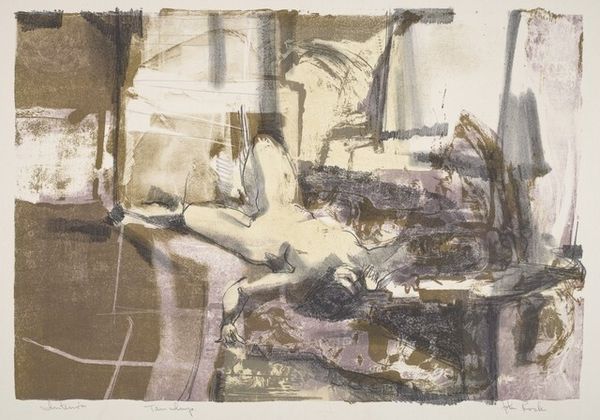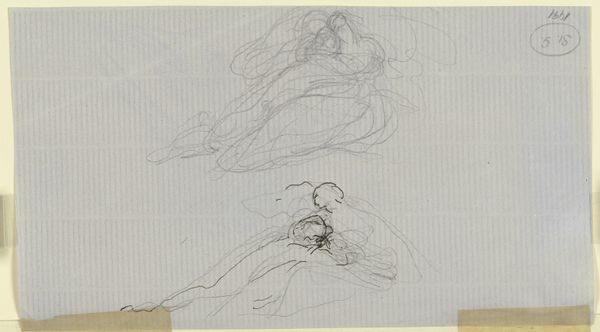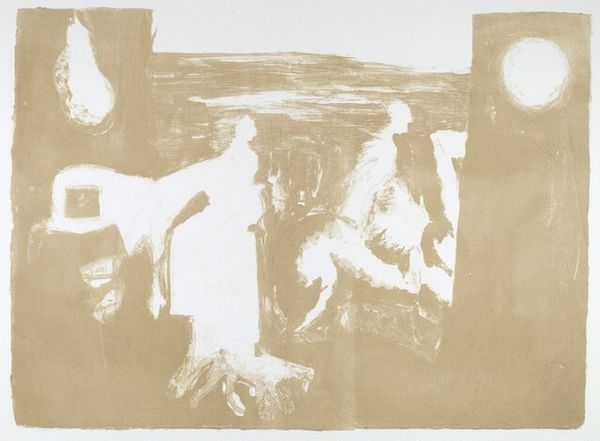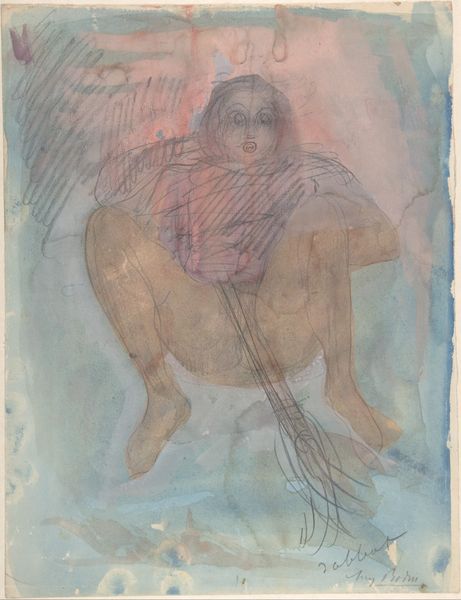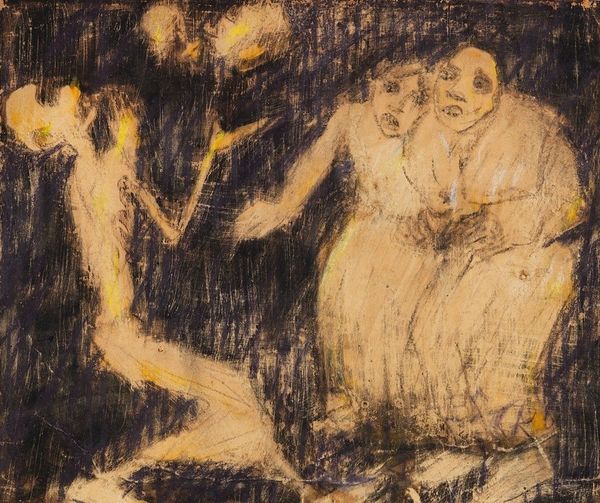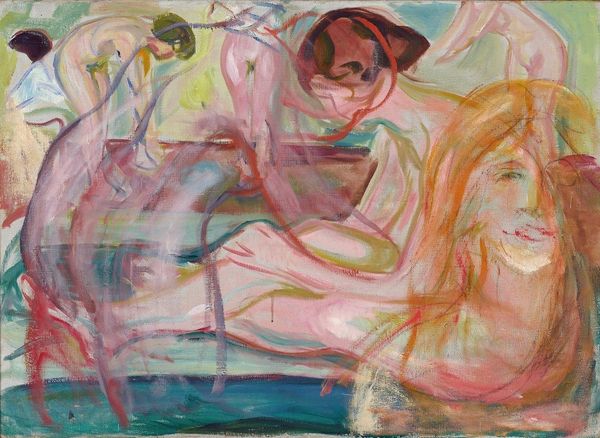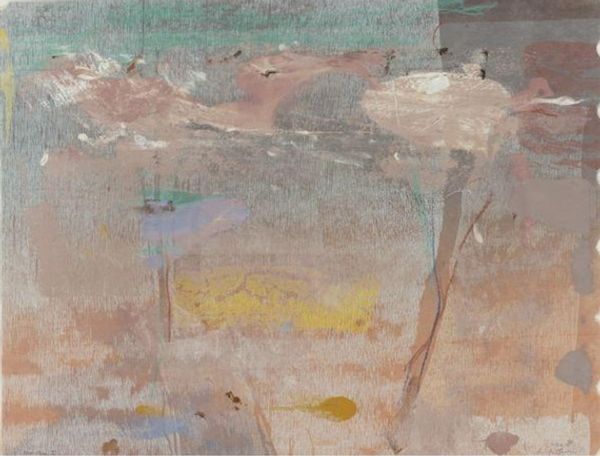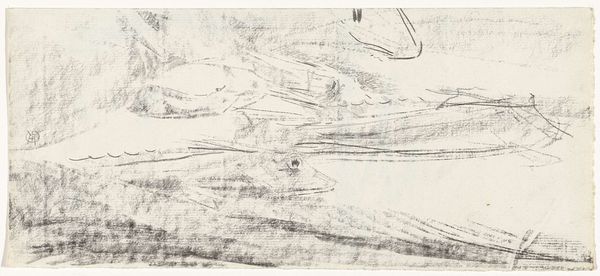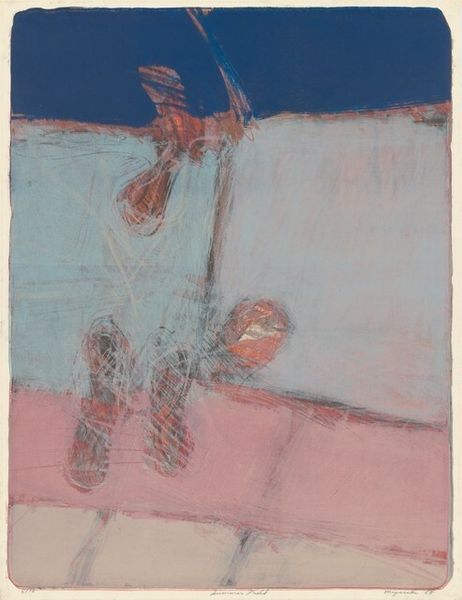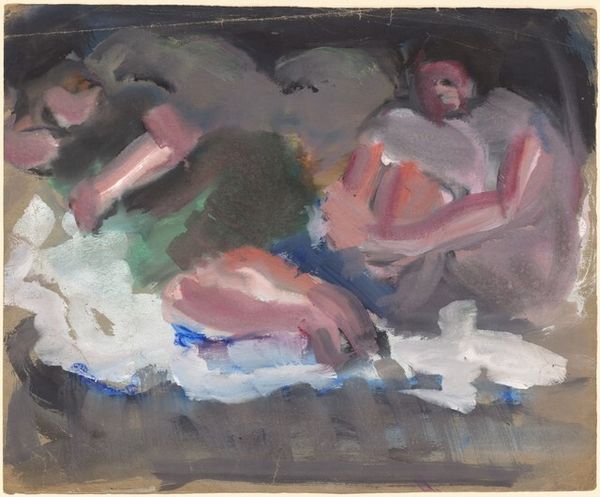
drawing, mixed-media, watercolor
#
drawing
#
mixed-media
#
landscape
#
figuration
#
watercolor
#
mixed medium
#
mixed media
#
watercolor
Copyright: Rijks Museum: Open Domain
Curator: Johan Antonie de Jonge created "Figuren in zee," sometime between 1881 and 1927, using watercolor and drawing in mixed media. Editor: My first impression is one of submersion, almost of drowning. The figures seem to be suspended or perhaps sinking. Curator: Indeed. The composition is quite remarkable in its blurring of the boundary between the figurative and the abstract. Observe how the figures are not sharply defined, but rather emerge from and dissolve back into the watery background. The lines are soft, almost tentative, creating a sense of ambiguity and fluidity. Editor: And the palette reinforces that impression. It is almost monochromatic—blues and greys. I think about water rituals and the symbolic meaning of the sea as chaos and cleansing. Given the cultural period, the scene resonates with classical water nymph or Ophelia motifs. The floating figure at the top center even looks like a dark head of long hair. Curator: Yes, the limited color palette, almost a grisaille, accentuates the tonal relationships and the modulation of light and shadow. Consider how the artist uses the translucency of watercolor to create a sense of depth and atmosphere. Notice the underlying structure given to the human figures with charcoal that almost fades in tone to match the hues in the wash. De Jonge captures the dynamism inherent in landscape work in his more subtle figure work. Editor: I wonder what cultural symbols these figures channel from de Jonge's psyche. They are definitely more evocative and fluid rather than narrative or clear depictions. And there is certainly more than just the physical act of being in the water present here; they have a visual link to centuries of water deities in the popular imagination. Curator: An excellent observation, locating the power of the work not just in its formal qualities, but in its power to tap into our collective subconscious. Editor: It's intriguing how formal constraints enhance these deeper symbolic associations and reveal how an image gains iconic presence.
Comments
No comments
Be the first to comment and join the conversation on the ultimate creative platform.
